The material world is full of paradigms, dualities
that with our temporal and faulty senses it is difficult to perceive what
is fact and what is illusion.
yaù sarvatränabhisnehas
tat tat präpya çubhäçubham
näbhinandati na dveñöi
tasya prajïä pratiñöhitä
TRANSLATION
In the material world, one who is unaffected by whatever
good or evil he may obtain, neither praising it nor despising it, is firmly
fixed in perfect knowledge.
PURPORT
There is always some upheaval in the material world
which may be good or evil. One who is not agitated by such material upheavals,
who is unaffected by good and evil, is to be understood to be fixed in
Kåñëa consciousness. As long as one is in the material
world there is always the possibility of good and evil because this world
is full of duality. But one who is fixed in Kåñëa consciousness
is not affected by good and evil, because he is simply concerned with Kåñëa,
who is all-good absolute. Such consciousness in Kåñëa
situates one in a perfect transcendental position called, technically,
samädhi.
(A.C. Bhaktivedanta Swami Pabhupada. Bhagavad
Gita AS IT IS 2.57. purport.)
Bhagavad Gita describes a Yogi of devotion as
being one who has withdrawn his senses from the enjoyments and speculations
of the world and who has taken shelter in the Absolute - Krishna. In the
purport to BG 2:58 Prabhupada explains how, "Arjuna is being taught here
to use his senses for the service of the Lord, instead of for his own satisfaction.
Keeping the senses always in the service of the Lord is the example set
by the analogy of the tortoise, who keeps the senses within."
Similarly, "The senses are
compared to venomous serpents. They want to act very loosely and without
restriction. The yogé, or the devotee, must be very strong to control
the serpents—like a snake charmer. He never allows them to act independently.
There are many injunctions in the revealed scriptures; some of them are
do-not’s, and some of them are do’s. Unless one is able to follow the do’s
and the do-not’s, restricting oneself from sense enjoyment, it is not possible
to be firmly fixed in Kåñëa consciousness. The best example,
set herein, is the tortoise. The tortoise can at any moment wind up his
senses and exhibit them again at any time for particular purposes. Similarly,
the senses of the Kåñëa conscious persons are used only
for some particular purpose in the service of the Lord and are withdrawn
otherwise." Such withdrawl from materialising the senses, and instead keeping
them dependent upon Krishna and His vision of hat is to be done, and what
is not is the basis of Sruti pramana - when our conclusions are the same
as that of the Absolute then and only then can such sensual perception
be cent per cent accepted as fact.
Some practical examples of sensuary illusion
are shown below for fun, but actually this is serious business. Our spiritual
and material lives depend upon us getting it right.
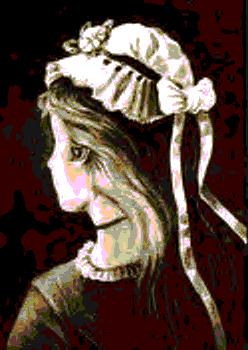 ..............................
..............................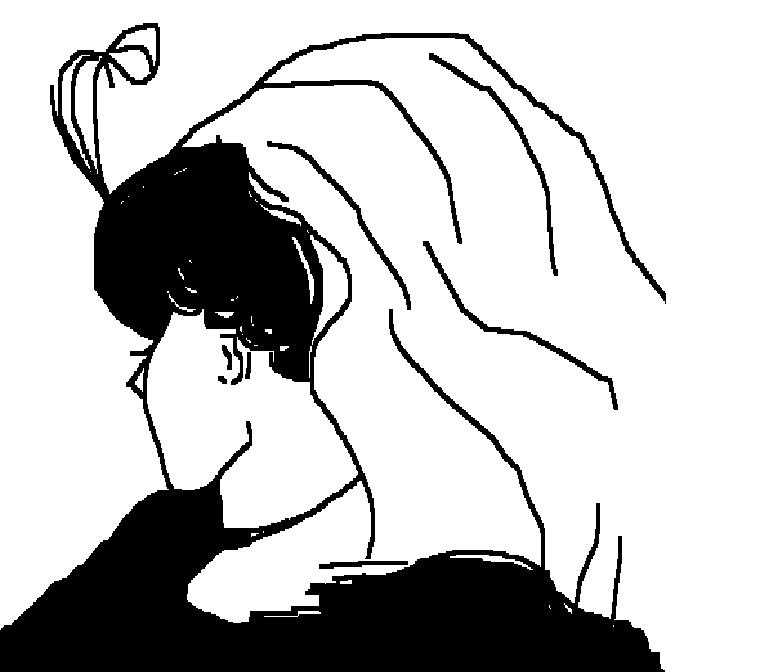
the paradigm of olde age or young beauty
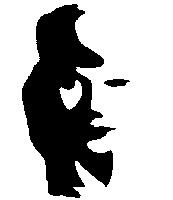
Illussion of Man Playing Horn... Or Woman in Sillhouette?
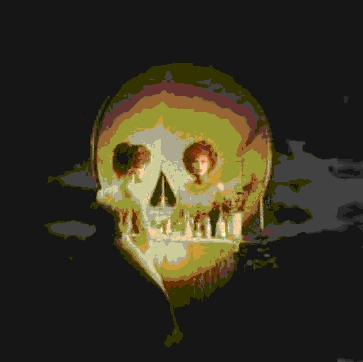
Woman looking into her Vanity Mirror or Death's Skull
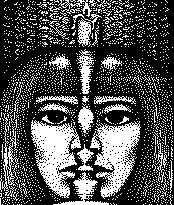
These two faces looking towards each other show
Difference in the world, but some see that there is a
oneness.
Our philosophy is that we are inconceivably one and yet
different.
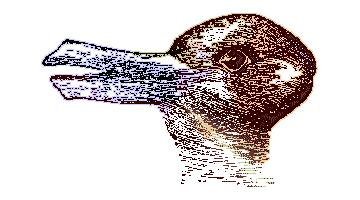
Rabbit or Duck the soul inhabits either or both.
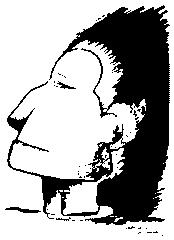
Native American Indian or Eskimo - in this world of names
and
changing bodies the eternal soul experiences either or
both,
before returning to our original home in the spiritual
realm.

Is the shastra facing away or facing towards us....
Are we trying to be independent of it, or have we surrendered
even a little toward Him...?
aviveka-kåtaù puàso
hy artha-bheda ivätmani
guëa-doña-vikalpaç ca
bhid eva srajivat kåtaù
TRANSLATION

